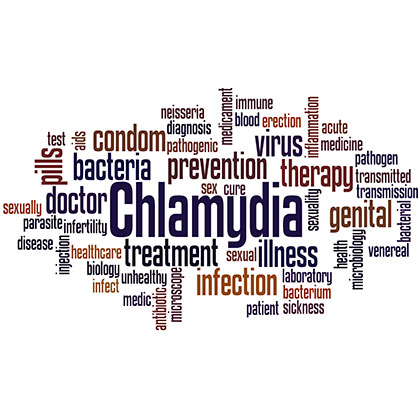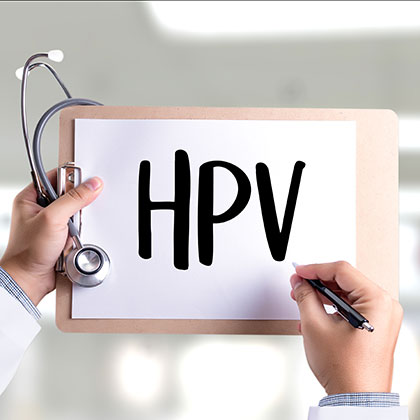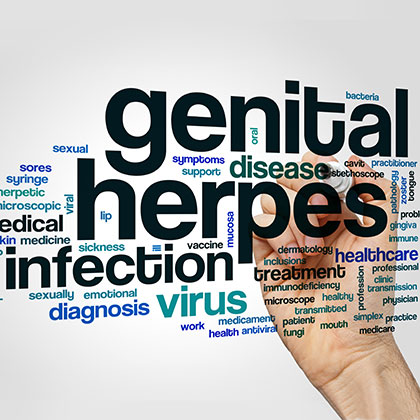
Pubic lice – also called ‘crabs’ or, to give them their medical name, Phthirus pubis – are one of three types of tiny parasitic insects that live on humans (the other two types are head lice and body lice).
Considered a type of sexually transmitted infection (STI), pubic lice are a little smaller than the other two types of lice, growing to about 1 - 2mm long (smaller than the head of a match). Grey yellow brown or dusky red in colour, they are called crabs because they have crab-like claws on their second and third pairs of legs (they have three pairs of legs altogether).
But despite their name they don’t just live on pubic hair. They can also be found in other parts of the body that have thick, coarse hair, including the underarms, legs, chest, stomach, anus and back. You can also sometimes find them in facial hair – beards and moustaches for instance – and occasionally even eyelashes and eyebrows.
Pubic lice need their claws to attach themselves tightly to hairs. They survive by sucking tiny amounts of your blood through your skin. And they can multiply significantly. One female louse can lay up to 300 eggs (also called nits) during its lifetime of one to three months. The eggs – which are smaller than a pinhead and pale brown in colour – stick to hairs near the skin, then hatch after six to 10 days. Once empty, the empty egg sacks are white.
Pubic lice are also quite common, and according to the National Institute of Health and Care Excellence (NICE), 1.3 - 4.6 per cent of people are affected (worldwide the average is two per cent) (i). They are also far from a modern problem, as some reports have found evidence of pubic lice in Roman and medieval Britain (ii).
How are they spread?
If you’re affected by pubic lice it doesn’t suggest you have poor hygiene. Pubic lice are passed on from one person to another by close body or sexual contact with someone who has them. This means you don’t even have to have sex with someone to get pubic lice – hugging or kissing someone who has them can also put you at risk of getting them too. And while it’s not that common, you can also get pubic lice by sharing clothes or towels with an infected person, or by sleeping in their bed.
If, however, you have sex with someone who has pubic lice, using a condom or another type of barrier contraception won’t protect you from becoming infected.
What are the symptoms?
If you’ve had contact with someone who has pubic lice, it might take up to three weeks before you may notice any of the symptoms. The main thing to look out for is itching in the affected areas, which can often be worse at night (this is when the lice are most active). The itching is caused by an allergic reaction to the saliva produced by the lice when they bite.
Other symptoms include the following:
-
Red bumps on the skin in areas covered by hair
-
Skin irritation, inflammation and redness caused by scratching
-
Tiny blue or red spots on or around affected skin caused by lice bites
-
Tiny black or dark brown specks on your skin or in your underwear (these are lice droppings)
-
Eye inflammation (if eyelashes are affected)
You or your partner may even spot the lice themselves moving or notice their eggs. However, they are often too small to see, and they tend not to move in the light. And sometimes you may not have any symptoms at all. This means you or someone else may have pubic lice without your or their knowledge and could pass them on without realising it. Symptoms of public lice can sometimes be confused with other sexually transmitted conditions such as scabies.
Should you have a check-up?
If you think you may have pubic lice, it’s a good idea to see your GP or practice nurse to make sure. Pubic lice are usually easy to diagnose, and your doctor or nurse may simply look for the signs of them with a magnifying glass or remove a louse from your hair and check it under a microscope. It’s also a good idea to have a check-up after being in contact with someone who has pubic lice, even if you don’t have any symptoms.
If you don’t want to go to your family GP or practice nurse you can also get help for pubic lice at a sexual health clinic, also often referred to as a genitourinary medicine (GUM) clinic. You can often find these in hospitals or health centres. Click here to find sexual health services near where you live.
Are there any complications?
Unless you treat pubic lice it’s unlikely that they’ll go away on their own. Not treating them can also lead to complications. For instance, if you’ve been scratching a lot it can lead to a bacterial skin infection such as impetigo or boils on the skin called furunculosis.
If you have a rare case of pubic lice in your eyelashes, you may develop an eye infection such as conjunctivitis or inflammation of the eye, such as blepharitis or corneal epithelial keratitis (inflammation of the cornea).
Meanwhile, if you know you got pubic lice through sexual contact with an infected person, it’s important to get tested for other sexually transmitted infections at a sexual health clinic. This is simply a precaution, since the lice themselves don’t transmit other types of STIs such as HIV or chlamydia.
According to the NHS you should also inform any sexual partners you’ve had in the past three months that they also need to be seen and treated by a health professional (iii). However, if you don’t want to do this yourself you can give staff at the clinic details of those you need to contact, and they will do it on your behalf without giving out your name or any other details. You can learn more about sexually transmitted diseases such as genital herpes in our helpful guide.
How are pubic lice treated?
You can treat pubic lice yourself at home using a special insecticide cream, lotion or shampoo. The two most common insecticides used to treat pubic lice are malathion, which comes as a liquid or lotion, and permethrin, which is a cream. Your GP can give you advice on which treatment you should use and how to use it, or you can buy either treatment from a pharmacy.
If you decide to treat yourself without your doctor’s help, a pharmacist can give you advice about which treatment would suit you and how you should use it. However, you should always get advice from a doctor before using over-the-counter treatments for pubic lice if you’re pregnant or breastfeeding, or if you’re aged 18 or younger (for instance, permethrin is not usually recommended for people under 18).
Some pubic lice treatments only have to be applied to the affected area, but sometimes you have to treat your entire body, including your scalp. On average you’ll need about 100ml of lotion or liquid or 20 - 30g of cream for a whole-body application.
Apply the treatment to cool, dry skin – not straight after having a bath or shower. Pay particular attention to areas with hair, including pubic hair, eyebrows, beards and moustaches. Be careful when treating your eyebrows, as it’s important not to get any of the insecticide in your eyes (but if you do get some in your eyes, rinse them thoroughly with water).
Leave the lotion or cream on for the recommended time, then wash it off. Some treatments can be rinsed off after 10 - 15 minutes, but others may have to be left on for as long as 24 hours. If you wash any part of your body during this time, you’ll have to reapply the treatment to the washed area again.
However, if the cream or lotion irritates your skin, causing more itchiness, redness, stinging or burning, wash it off immediately and ask your GP or pharmacist for advice. Also, don’t treat yourself without medical advice if you have an eyelash infection. Though rare, this type of pubic lice infection needs a different treatment, as the standard pubic lice lotions and creams could harm your eyes – your doctor can recommend the right one, usually a simple eye ointment that is applied to the eyelashes to suffocate the lice.
Finally, repeat the treatment after three to seven days, according to the directions on the packet. The second application is designed to make sure any lice that survived the first treatment are killed before they’ve matured to the stage where they can lay any eggs.
If you use the treatment correctly it’s rare for it not to work. But if, after the second treatment, you think you still have pubic lice, don’t use the same treatment again. Instead, see your GP or ask a pharmacist for advice. It’s thought that lice can build up a resistance to a particular treatment, so you may have to use a different one. In the meantime, taking an antihistamine tablet may help with the itching, as this may continue for a few days after the second application. Antihistamine tablets can be bought over the counter at pharmacies.
What else should you do?
While you’re using pubic lice treatment, avoid close body contact with other people until you’re sure your treatment has been successful. It’s also important to wash your clothes, towels and bed linen in a washing machine on a very hot cycle (50ºC or higher) to make sure any lice left behind are killed while you’re being treated. Meanwhile, it’s not necessary to shave any of your pubic or body hair – experts think this doesn’t work anyway, because pubic lice only need a very small length of hair to lay their eggs on.
You may find that some dead lice eggs remain on your hair after treatment. These can stick around for weeks afterwards, but you can remove them if you want to by using a special comb that you can buy from a pharmacy.
You can start having sex again once you – and your current partner or partners – have finished your treatment and any follow-up treatment.
Treating any STI can be worrying at times, but this guide should help make it a little easier. For more information on a range of other common health conditions, simply visit our health library.
References:
-
Available online: https://cks.nice.org.uk/topics/pubic-lice/background-information/prevalence/
-
Kenward. H. Pubic lice in Roman and medieval Britain. Trends parasitol. 2001;71:167–164. Avaliable online: https://www.ncbi.nlm.nih.gov/pubmed/11360885. Available online: https://www.cell.com/trends/parasitology/fulltext/S1471-4922(01)01890-6
-
Available online: https://www.nhs.uk/conditions/pubic-lice/
Related Posts
Disclaimer: The information presented by Nature's Best is for informational purposes only. It is based on scientific studies (human, animal, or in vitro), clinical experience, or traditional usage as cited in each article. The results reported may not necessarily occur in all individuals. Self-treatment is not recommended for life-threatening conditions that require medical treatment under a doctor's care. For many of the conditions discussed, treatment with prescription or over the counter medication is also available. Consult your doctor, practitioner, and/or pharmacist for any health problem and before using any supplements or before making any changes in prescribed medications.

Christine
Christine Morgan has been a freelance health and wellbeing journalist for almost 20 years, having written for numerous publications including the Daily Mirror, S Magazine, Top Sante, Healthy, Woman & Home, Zest, Allergy, Healthy Times and Pregnancy & Birth; she has also edited several titles such as Women’ Health, Shine’s Real Health & Beauty and All About Health.
View More



